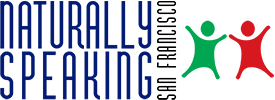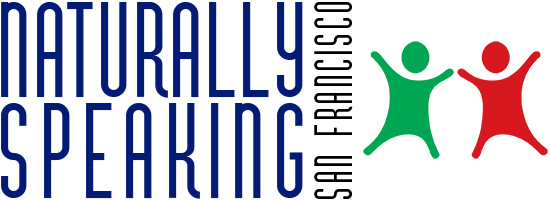Annick Tumolo, Bay Area speech language pathologist, specializes in the remediation of expressive/receptive language disorders
Children who have language delays from birth in the absence of intellectual disability, genetic syndromes, or hearing impairment are referred to as having a developmental language disorder or specific language impairment (SLI). A child may also acquire a language disorder due to illness or trauma. Additionally, children can have an expressive and/or receptive language disorder secondary to another impairment such as intellectual disability or autism.
A child with SLI may have both an expressive language disorder (difficulty speaking) and/or a receptive language disorder (difficulty understanding) at their chronological age or developmental level.
For information regarding preschool language disorders refer to the ASHA website:
http://www.asha.org/public/speech/disorders/preschool-language-disorders/
and find answers to frequently asked questions:
- What are preschool language disorders?
- What are some signs or symptoms of preschool language disorders?
- What if my child speaks more than one language?
- How are preschool language disorders evaluated?
- How are preschool language disorders treated?
- What can I do to help?
- What causes preschool language disorders?
- What are the types of preschool language disorders?
- How effective are treatments for preschool language disorders?
- What do speech-language pathologists do when working with individuals with preschool language disorders?
Examples of an Expressive Language Impairment are:
1) A child may have difficulty in the areas of form (grammar and sentence structure), content (vocabulary) and/or the use of language (pragmatics or the social use of language).
2) A child with difficulty in language form will consistently make errors in grammar such as “Her runned away.”, “Him like it.”, “Them do it.” Their speech may be characterized by errors in noun verb agreement, pronoun use, and verb tenses. Additionally, their sentence length may be very short compared to peers.
3) A child who has difficulty in the area of content will make statements that don’t make sense based on the context such as when a young kindergartener is presented with shapes and consistently calls the diamond shape “golden”, or has difficulty remembering the names of farm animals and the sounds them make. They may call the animal by the animal sound or vice versa. Their vocabulary will be limited and categorization skills adversely affected.
4) A child who has difficulty with language use may constantly interrupt others, talk off topic or have difficulty remaining on topic.
5) For a very young child who is just learning to say their first words, an expressive specific language impairment would be observed as a delay in producing words. Children with developmental language disorders may begin as late talkers. Based on developmental milestones, an 18 month old should expressively be producing 50 words. However, their receptive language or understanding of language may or may not be intact.
Children who have receptive language deficits have difficulty understanding language in the areas of form, content and use.
Examples of a Receptive Language Impairment are:
1) A child may not understand language form including grammar and syntax, and thus misinterpret what is said to them. An example is when a child is told to “put the doll under the table” and they may understand the sentence as “put the doll on the table.” A child may confuse understanding of pronouns too, such as when told “give the crayons to her” they may interrupt it as “give the crayons to him.”
2) In the area of content, a child asked to sort objects by group such as animals, food and clothes may get this task confused and not understand how to group items by category.
3) In the area of use (pragmatics) a child may not pickup on nonverbal cues such as understanding facial expressions, tone of voice, and situational context. They may not understand the “give and take” of conversations, and have difficulty taking turns. Eye contact may be limited or inconsistent.
Table 4-1 “Behavioral Characteristics Associated with Language Disorders” on page 129 of the Treatment Resource Manual for Speech-Language Pathology , By Froma Roth and Colleen Worthington, provides additional characteristics that may indicate the need for a speech and language evaluation. The following definitions are listed:
Inattention – impairment of concentration characterized by difficulty with completing tasks, attending to details, following through on instructions, and tuning out distracting stimuli
Impulsivity – The abrupt performance of actions without sufficient deliberation or consideration of the consequences
Hyperactivity – An excessively high level of activity accompanied by a reduced ability to inhibit the activity volitionally
ADHD – Disorder characterized by one or more of the above features: inattention, impulsivity, or hyperactivity
Perseveration – Inappropriate and often involuntary continuation of a motor or verbal response when it is no longer relevant.
Echolalia – Excessive and developmentally inappropriate repetition of the speech of others, generally with the same intonation. May be immediate or delayed





